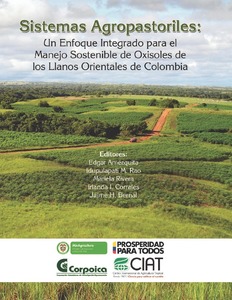Seven years resource-conserving agriculture effect on soil quality and crop productivity in the Ethiopian drylands
Smallholder farmers’ attitudes and determinants of adaptation to climate risks in East Africa
Adapting to climate risks is central to the goal of increasing food security and enhancing resilience of farming systems in East Africa. We examined farmers’ attitudes and assessed determinants of adaptation using data from a random sample of 500 households in Borana, Ethiopia, Nyando, Kenya, Hoima Uganda, and Lushoto, Tanzania. Adaptation was measured using a livelihood-based index that assigned weights to different individual strategies based on their marginal contributions to a household’s livelihood.
Social and economical aspects of Miombo woodland management in Southern Africa: options and opportunities for research
Five themes are identified for social, economic and policy research relating to miombo woodland management in southern Africa. They are: (1) patterns of local institutional change; (2) household use of woodland products; (3) markets for woodland products; (4) longer term dimensions to woodland use and exploitation and (5) policy and legislation. These themes are by no means definitive or exhaustive, but are described here as a means of focusing on the scope of future research, and as a basis for identifying priorities.
Sistem informasi geografis untuk pengelolaan sumberdaya alam
Sistema georreferenciado de indicadores de calidad de suelos para los Llanos Orientales de Colombia : Estudio de caso: Municipio de Puerto López, Meta
Geosoil permite almacenar, consultar e interpretar información tanto del suelo como de su entorno biofísico a diferentes escalas: parcela, finca, comunidad, municipio, departamento, región, país. Opera a partir de una base de datos relacional elaborada en ACCES 2000, compuesta por una serie de tablas principales estructuradas con información a diferentes niveles jerárquicos que permiten la caracterización de las propiedades del suelo.
Soil property changes over a 120-yr chronosequence from forest to agriculture in western Kenya
Much of the native forest in the highlands of western Kenya has been converted to agricultural land in order to feed the growing population, and more land is being cleared. In tropical Africa, this land use change results in progressive soil degradation, as the period of cultivation increases. Both rates and variation in infiltration, soil carbon concentration and other soil parameters are influenced by management within agricultural systems, but they have rarely been well documented in East Africa.
Soil erosion management research in Asian catchments: Methodological approaches and initial results - Proceedings of the 5th Management of Soil Erosion Consortium (MSEC) Assembly, held at Semarang, Central Java, Indonesia, 7-11 November 2000
Soil restoration after seven years of exclosure management in northwestern Ethiopia
Ecological restoration through exclosure establishment has become an increasingly important approach to reversing degraded ecosystems in rangelands worldwide. The present study was conducted in northwestern Ethiopia where policy programs are aiming to restore degraded lands. Changes in soil properties following establishing exclosures on communal grazing lands were investigated. A space-for-time substitution approach was used to monitor changes in soil properties after conversion of communal grazing lands to exclosures with ages of establishment ranging from 1 to 7-years.





